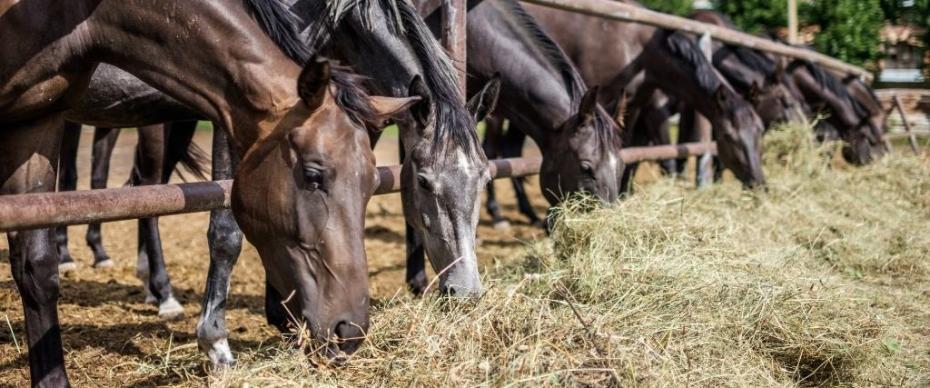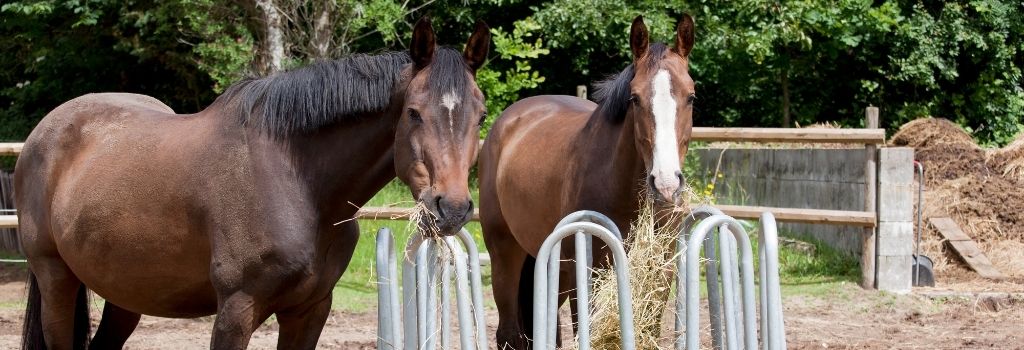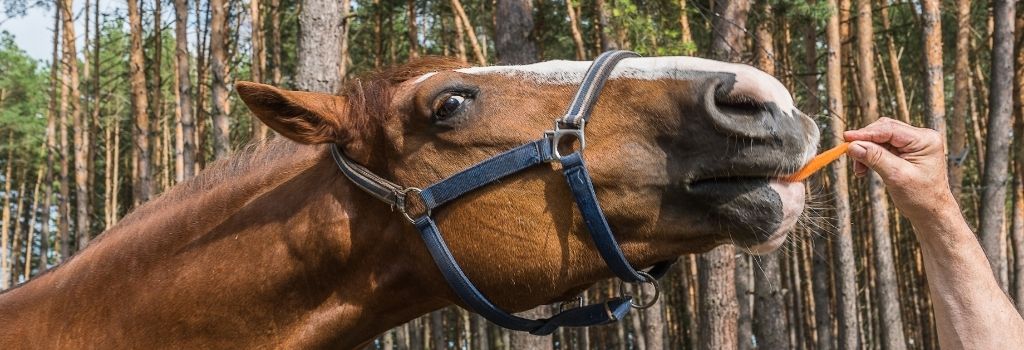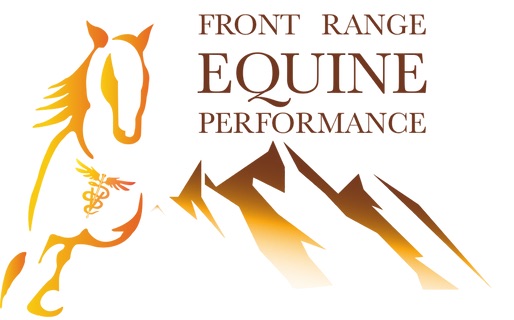
Nourishing Your Equine Partner: A Comprehensive Guide to Equine Nutrition
Horse enthusiasts share an unspoken bond with their equine companions. Ensuring their health and vitality is a priority, and a fundamental aspect of maintaining their well-being is proper nutrition. As equine veterinarians, we’d like to explore the intricate world of equine nutrition to help you give your horse the best care possible. In this blog post, we’re unraveling the stages of a horse’s life, sharing signs of overfeeding, and discovering the essential considerations when feeding a pregnant mare. Let’s dive in!
The Science Behind Equine Nutrition
To truly appreciate the significance of equine nutrition, you need to understand the science. Horses are non-ruminant herbivores with complex digestive systems designed to extract nutrients from plant material. Each part plays a crucial role in breaking down food, absorbing nutrients, and eliminating waste.

Understanding the concept of Total Digestible Nutrients (TDN) is essential for creating a well-balanced diet. TDN represents the digestible portion of feed that provides energy to the horse. It’s calculated based on the feed’s chemical composition, including protein, fiber, fat, and carbohydrates.
Protein is another critical component of equine nutrition. It’s essential for muscle development, immune function, and overall health. However, excess protein can be harmful, so it’s important to strike the right balance based on your horse’s age, activity level, and dietary requirements.
Minerals and vitamins also play a vital role in your horse’s well-being. Calcium and phosphorus, for example, are essential for bone health. To keep them healthy, horses also need vitamins A and D, selenium, omega fatty acids, and other vitamins and minerals.
The Role of Forage in Equine Diets
Forage, such as hay and pasture, constitutes the foundation of a horse’s diet. High-quality forage provides essential nutrients, including fiber, which supports healthy digestion. The type of forage you provide can impact your horse’s overall health. Grass hay, legume hay (like alfalfa), and pasture grasses all have distinct nutritional profiles, and selecting the right one depends on your horse’s specific needs.
Concentrates
Concentrates, such as grains, pellets, and commercial feeds, can be a valuable addition to your horse’s diet, especially when they require extra energy for performance, pregnancy, lactation, or growth.
Grain choices can vary from oats to corn to commercial mixes, and the right one depends on your horse’s age, activity level, and dietary needs. Always introduce concentrates gradually to prevent digestive upset, and monitor your horse’s condition to ensure they maintain a healthy weight.
Hydration: The Often-Overlooked Essential
Proper hydration is essential for digestion, temperature regulation, and overall health. Horses can drink substantial amounts of water daily, and access to clean, fresh water should always be available.
During hot weather or strenuous activity, horses can lose significant amounts of water through sweating. In these situations, electrolyte supplementation can help replace lost minerals and maintain proper hydration. However, it’s essential to use electrolyte products specifically designed for horses and follow recommended guidelines for use. If you’re unsure how to use them properly, talk to your horse’s veterinarian.
Navigating Your Horse’s Nutritional Needs at Different Life Stages
Your equine companion’s nutritional journey begins when they are a newborn foal. During this initial phase, they rely entirely on nursing from their mother. However, in just a few weeks, they start sampling their mom’s food and hay in a process known as creep feeding. During this transition, you can introduce a small amount of foal grain, typically around one pound per 100 pounds of body weight. This usually starts at around one month of age.
Around the age of four to six months, weaning takes place, and the foal is separated from its mother. Before this separation, it’s wise to gradually increase the feed volume to ease the transition. After weaning, the goal is to feed approximately 2% to 3% of the weanling’s body weight in grain and hay, aiming for a protein content of about 14% to 16%. This balanced approach promotes healthy growth without overtaxing developing bones.

By the time a horse reaches two years old, they’ve transitioned into adulthood in terms of nutrition. The feeding regimen shifts to a higher proportion of forage and slightly less grain. The specific quantities depend on the horse’s breed, individual needs, and whether they are an easy keeper or require extra attention for weight management. These factors play a crucial role in tailoring the feeding plan to each horse’s requirements.
The Unique Needs of Senior Horses
As horses age, their nutritional requirements change. Senior horses may have dental issues that make it harder for them to chew and digest forage. Additionally, senior horses may experience changes in metabolism, muscle mass, and immune function. Tailoring their diet to address these changes, such as providing higher-quality protein and specific vitamins and minerals, can support their overall well-being in their golden years.
If your horse’s body condition deteriorates as they get older, we encourage you to speak with a trusted equine veterinarian. They can help you get your horse back on a diet that meets their nutritional needs.
Recognizing Signs of Overfeeding
One of the gravest mistakes in equine nutrition is overfeeding, which can lead to many health issues, including founder (laminitis) and arthritis. Recognizing when your horse is carrying excess weight is essential. You can use an equine body condition chart, which categorizes horses from emaciated to extremely obese on a scale from one to nine, to assess your horse’s weight. In addition, there are several symptoms to watch for.
Key indicators of overfeeding include:
- Cresty neck
- Fat deposits behind the shoulders
- Fat deposits below the withers
- Fat deposits at the tailhead
These physical signs serve as warnings that your horse may be accumulating excess weight. Making dietary adjustments right away is vital in preventing further health complications.
Feeding Your Pregnant Mare
When feeding a pregnant mare, the most significant changes happen during the last three months of her pregnancy. During this crucial period, you’ll want to increase her food intake slightly to accommodate the developing fetus and the onset of lactation.
It’s important to keep a watchful eye on your pregnant mare’s grazing habits during those last few months. You need to keep them out of the pasture during this time because the fescue on the grass can pose severe risks to both the mother and her foal. Ensuring a fescue-free environment is crucial when it comes to ensuring the health of pregnant mares and their offspring.
Closing Thoughts
Ensuring that your horse receives the right nutrition is a multifaceted journey that requires dedication, knowledge, and a keen understanding of your horse’s needs. From foalhood to their golden years, proper nutrition is the cornerstone of good health throughout all life stages. Talk to your trusted equine veterinarian to develop a personalized feeding plan that ensures your horse’s health and vitality.
Don't have a vet in your area yet? We can help you find a local veterinarian.
If you have more questions, the GeniusVets Telehealth platform will give you unlimited access to text and/or video calls with board-certified veterinarians! To learn more click here.
